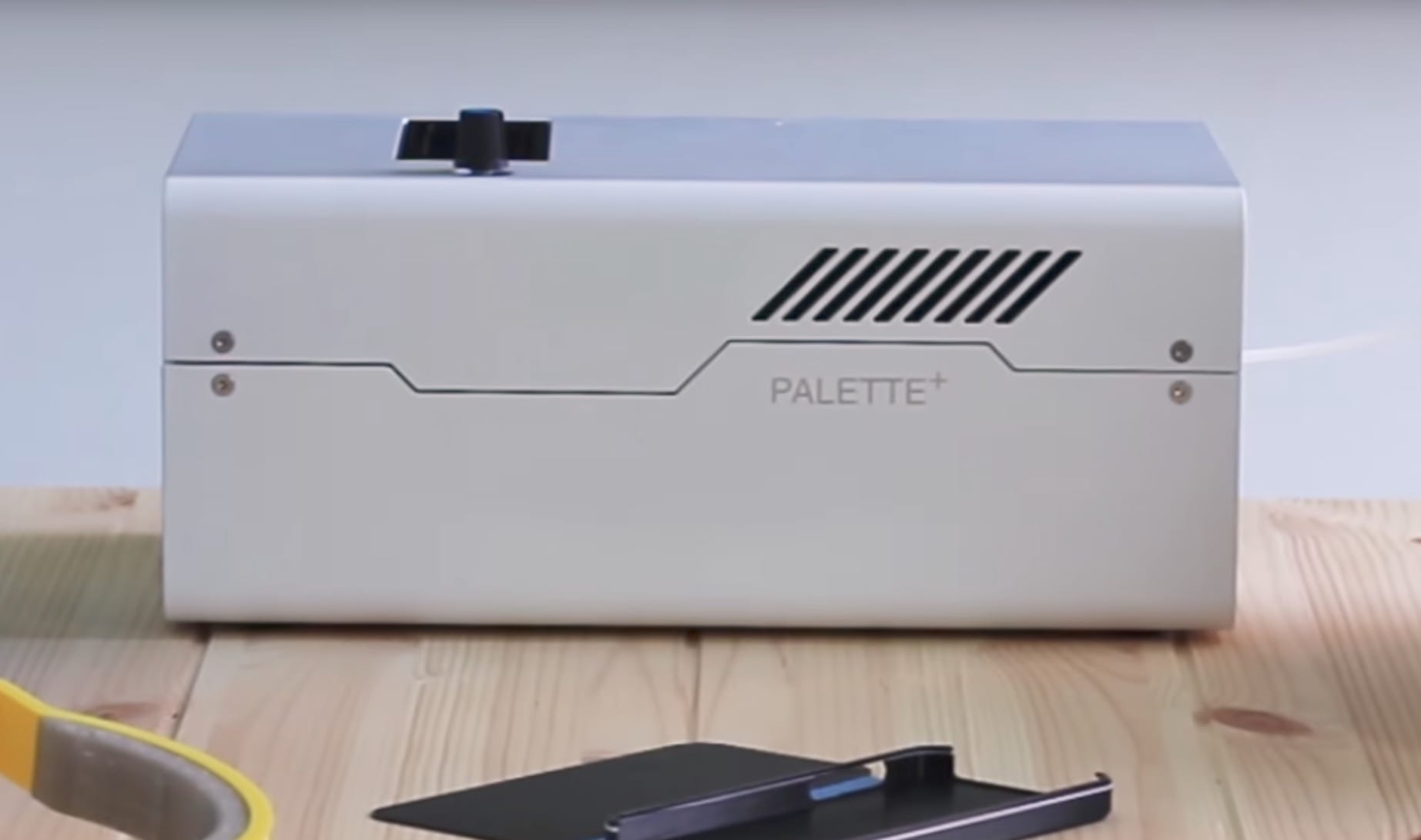
Canada-based Mosaic Manufacturing announced a new version of their Palette multimaterial accessory, the Palette+.
If you’re not familiar with the Palette concept, it is a very unusual approach to achieving multimaterial 3D printing on almost any open materials desktop 3D printer.
Imagine this: a multicolor print is simply a long series of filament swaps, from one color (or material) to another. Each 3D printed layer is a mix of these materials, with the filament changing at just the right moment in the movements of the extruder.
Here’s how it works. Their system analyzes a 3D model to determine the precise moments when a filament swap is required, and then produces a single filament composed of appropriate-length segments of each material by snipping and splicing filament from standard spools of material.
You end up with a very odd Frankenstien-like filament that seems to be patched together with many tiny segments of different materials.
But if you were to 3D print that filament on an open materials device, the length of the segments would correspond to the required material swaps during printing! This transforms an otherwise single-material machine into a multimaterial machine.
The Palette can accept up to four input filaments (at 1.75mm only, however) and chops & splices them into any 3D model sequence you’d like to attempt. You need only install it as a kind of “filament preparation device” ahead of your 3D printer.

But what’s new with the Palette+ ? Plenty, it turns out.
The basic concept is the same, but Mosaic Manufacturing seems to have tuned the machine to accept more kinds of material. Here’s what it can now do:
Palette+ can accept water soluble material. This is an extremely powerful capability that can transform a single extruder 3D printer into one that can 3D print arbitrarily complex 3D models by using water soluble support. This support material can get into nooks and crannies, yet still be easily removed by dissolving it in water.
Palette+ can now accept PETG, a popular 3D print material that can produce more durable prints that can be water resistant. And it often comes in great colors, too.
Palette+ can now accept TPU, or flexible filament. This is also a very powerful capability, because it means that a single extruder machine can print objects with flexible components. Imagine printing a tool with a rubbery handle, for example. Or a box with flexible hinges. Wheels with rubbery tires, etc.
Finally, Palette+ is apparently now food safe. This means that if: a) you have food safe input filaments, and b) you have a food safe 3D printer, you could theoretically print food safe objects.
However, I would caution this approach, as extrusion-based 3D printers always produce prints that have gaps in layers and coarse surfaces that invariably cannot be cleaned of debris, bacteria and other nasty stuff. So I am not certain you can truly produce repeat-use food safe items with this approach. But the Palette+ does take you towards that goal.
The Palette+ is apparently now in production and will ship at the end of July. The cost: USD$799.
If you’re concerned about the cost, consider this: that cost changes your single extruder machine into the equivalent of a FOUR extruder machine.
I’m surprised there are few 3D printer manufacturers partnering with Mosaic Manufacturing, as it provides a way to quickly make almost any 3D printer much more powerful. One company that has is Robo, who have set up a way for their 3D printer clients to more easily set up and use the Palette+.

